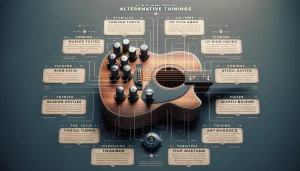Understanding the Importance of Wood in Guitar Construction
The Soul of a Guitar: Why Wood Matters
Picture this: every guitar you’ve ever loved, every chord that sent shivers down your spine, owes much of its magic to one thing—its wood. The type of wood used in a guitar is not just a backdrop; it’s the heart, the soul, and the storyteller. Without it, your instrument’s sound would lack the personality that makes it uniquely yours.
Take a classic example: think of a rich, resonant acoustic tone. Chances are, you’re hearing the work of **spruce** or **rosewood**, two beloved woods in guitar-making. Ever wondered why your electric guitar growls one moment and sings the next? That’s the power of **ash**, **mahogany**, or even **maple** carving its mark into your sound.
It’s like how coffee beans shape the flavor of your morning brew—or how soil transforms a vineyard’s grapes. Wood doesn’t just hold the strings; it shapes the very heartbeat of your music.
- Dense woods like mahogany add warmth and depth, ideal for blues and jazz.
- Lighter woods such as alder bring balance and clarity, perfect for versatile players.
Your choice of wood isn’t just craftsmanship—it’s alchemy. The right match can elevate your playing from ordinary to extraordinary!
Different Types of Guitar Woods and Their Characteristics
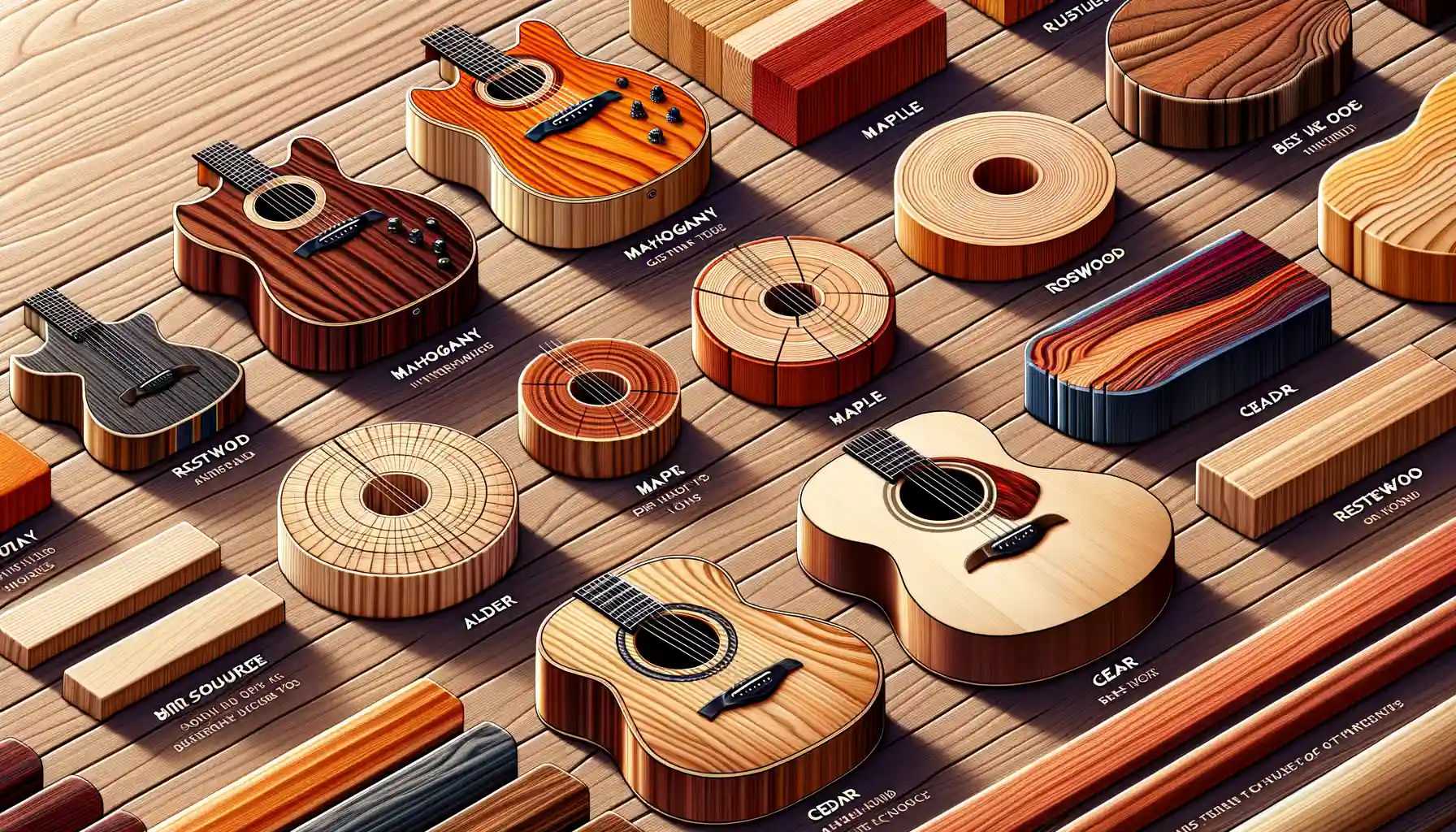
Warm Timbres: Exploring Tropical and Exotic Tonewoods
Let’s dive into the fascinating world of guitar woods—it’s where the magic truly begins. Every wood type is like a storyteller, shaping how your guitar whispers, sings, or roars. Take mahogany, for instance. Known for its rich, resonant mids, it’s the warm embrace you didn’t know you needed. Perfect for blues or folk, it wraps every note in earthy, soulful tones.
Then there’s the crown jewel: rosewood. This beauty isn’t just gorgeous to look at; it delivers sparkling highs and deep lows, making fingerstyle melodies downright enchanting. And what about spruce? It’s the jack-of-all-trades, used in countless acoustic guitars thanks to its lightness and unmatched ability to project sound.
- Maple: Bright, clear, perfect for lead guitarists chasing articulate solos.
- Cedar: Warm and expressive—ideal for classical players wanting nuanced dynamics.
- Koa: Both visually stunning and tonally unique, blending warmth with chime-like brightness.
Local Legends: Don’t Overlook Domestic Woods
Did you know woods like ash and alder are the backbone of iconic electric guitars? They give instruments that snappy bite and punch we’ve grown to love in rock ‘n’ roll. Meanwhile, walnut, though rarer, offers a balanced blend of clarity and smoothness—a hidden treasure for tone explorers.
Each wood isn’t just material; it’s personality, attitude, and even rebellion. Who knew trees could rock so hard?
How Wood Type Influences Guitar Tone and Sound Quality
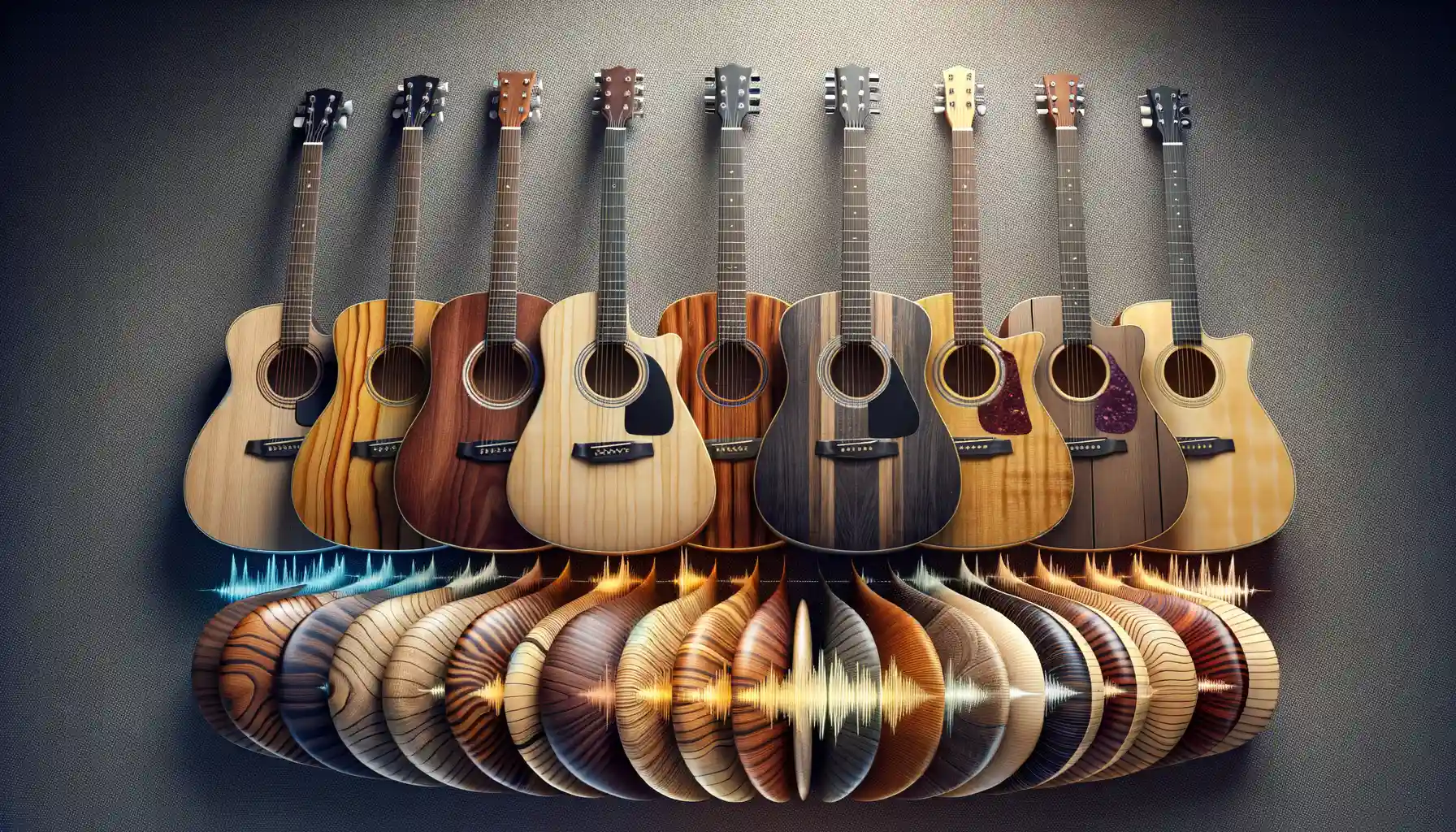
Why Wood Feels Like the Soul of Your Guitar
Ever wonder why two guitars, crafted in the exact same shape, can sound worlds apart? It’s not magic—it’s the *wood*. The type of wood used in a guitar’s construction acts as its vocal cords, shaping every strum and pluck. From punchy clarity to warm whispers, the right wood brings personality to your music.
Take **mahogany**, for example: it’s like the deep, resonant voice of a trusted storyteller, delivering rich mids with a slightly dark edge. On the other hand, **spruce** is the extrovert in the room—bright, loud, and clear, perfect for players who want their melodies to shine. And let’s not forget **rosewood**, often called the royalty of tonewoods, known for its luxurious overtones and crystal-clear highs.
- Alder: Balanced tones with great midrange clarity—ideal for rock or blues.
- Maple: Bright and snappy, with an almost glassy quality to its tone.
- Walnut: A curious blend of warmth and brightness with a punch of character.
Each tree brings its life story into your hands. Your guitar isn’t just a piece of gear—it’s a living, breathing extension of your voice.
Tips for Choosing the Right Wood for Your Guitar
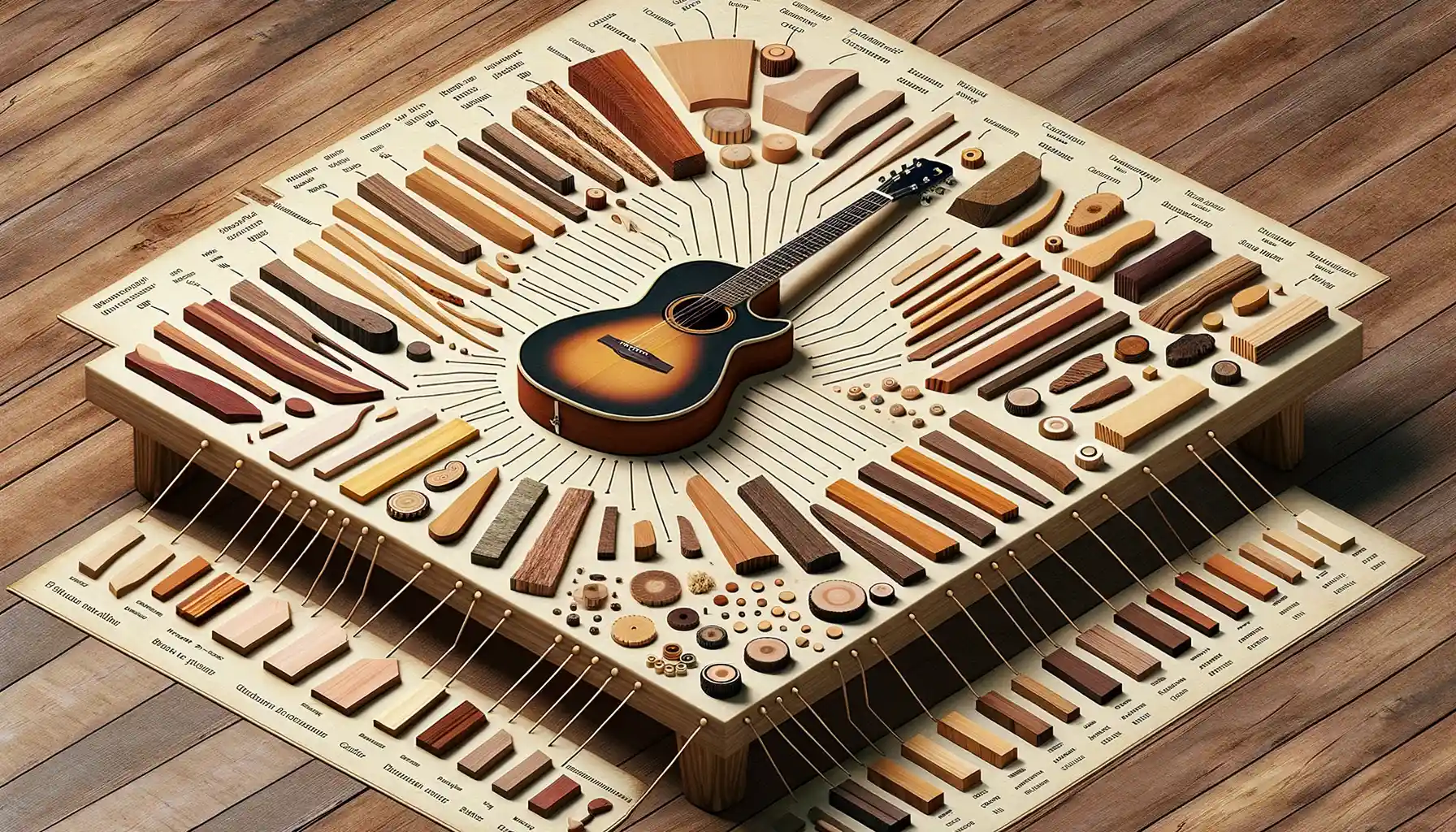
Finding Your Guitar’s Perfect Match
Choosing the right wood for your guitar is like matchmaking—it’s a deeply personal process. Each wood has its own voice, quirks, and character. Are you drawn to a bright, snappy tone or a warm, full-bodied resonance? Let’s break it down.
First, think about what kind of music you love to play. Do you gravitate toward fingerpicking acoustic ballads or aggressive power chords on an electric? For sparkling clarity, consider maple or spruce. Looking for a rich, mellow tone? You might fall in love with mahogany or rosewood.
Second, don’t forget to factor in how it feels in your hands. Wood doesn’t just shape sound; it also alters weight and comfort. Lightweight woods like alder or basswood are great for rocking out without breaking your back during gigs.
- Listen closely: Try guitars made of different woods side by side. The differences can surprise you!
- Trust your gut: If a guitar “speaks” to you, don’t overthink it. Your ears often know best.
Breathe life into your selection by balancing your dream sound with practical considerations. A guitar’s wood is more than material—it’s a soulmate for your music.
The Future of Guitar Manufacturing: Trends in Wood Selection
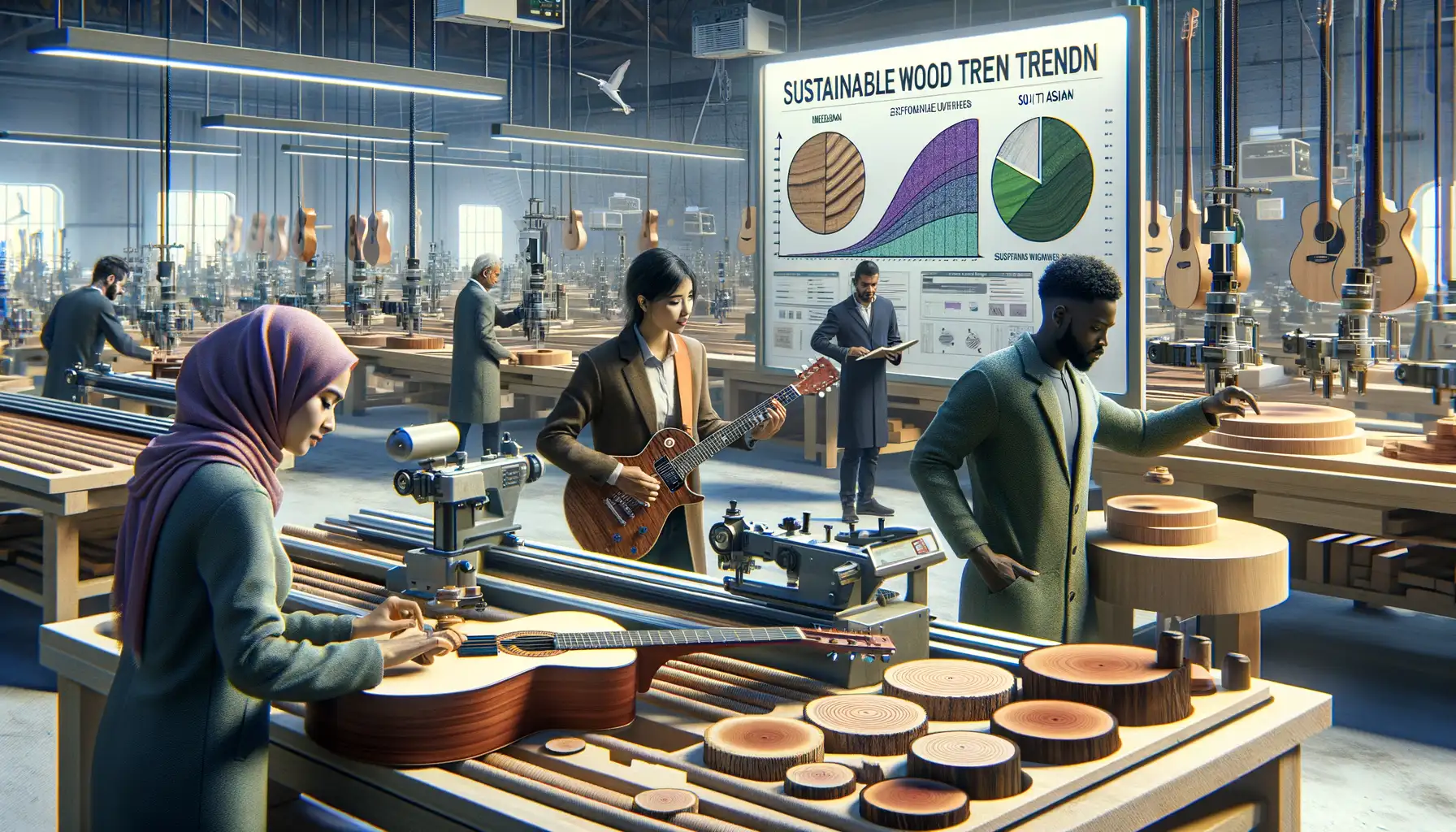
Reimagining Wood Choices for the Modern Guitar
The world of guitar manufacturing is undergoing a seismic shift, and the way we think about wood is at the heart of it. Picture this: the warm resonance of your favorite acoustic or the sharp bite of an electric riff—those sounds are born from the soul of the wood. But with environmental concerns and resource scarcity changing the game, the future isn’t just about selecting traditional materials like rosewood or mahogany. It’s about innovation.
Manufacturers are tapping into sustainable practices, and yes, even experimenting with *unexpected* alternatives like *torrefied woods* (heat-treated for rich tone) and **composites** that mimic the feel of aged timber. Imagine woods sourced from urban forestry, where city trees destined to be mulch are given a second life as tonewoods.
- More ethical sourcing through reforestation projects.
- Adapting “underutilized” species like mango and sapele.
- Lab-grown wood: science stepping in to create perfect tonal properties.
Why It’s About More Than Sound
There’s also a growing emotional connection to these changes. Players today are seeking guitars that tell a deeper story—an instrument made from ethically sourced materials or reclaimed wood adds layers to its character. It feels personal, almost poetic. This isn’t just a trend; it’s the evolution of guitars for a mindful generation. Would you trade tradition for sustainability? With innovations like these, you might not have to.




